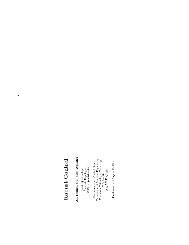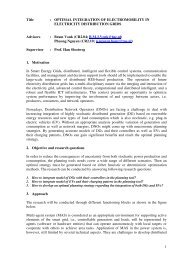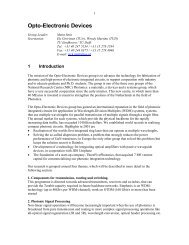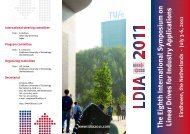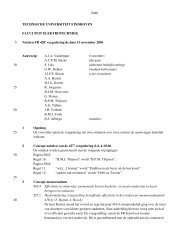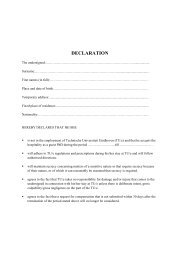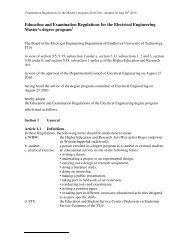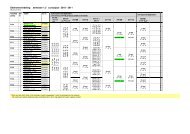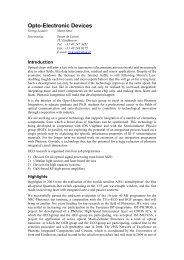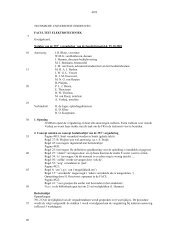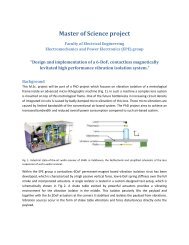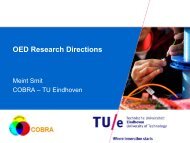COBRA Annual Report 2007 - Technische Universiteit Eindhoven
COBRA Annual Report 2007 - Technische Universiteit Eindhoven
COBRA Annual Report 2007 - Technische Universiteit Eindhoven
Create successful ePaper yourself
Turn your PDF publications into a flip-book with our unique Google optimized e-Paper software.
modulation, network coding, adaptation,<br />
equalization, timing recovery, and detection<br />
techniques. Systems-oriented work demonstrates<br />
these techniques in optical storage and wireless<br />
and optical transmission. Commercial impact is<br />
evidenced by many patents.<br />
For optical storage we developed backwards<br />
compatible techniques for future 4 th generation<br />
systems, e.g. for near-minimum-bit-error rate<br />
adaptation [3], 2-dimensional intersymbol<br />
interference cancellation, and characterization of<br />
mixtures of modulation noise and additive noise.<br />
We also developed bit-detection techniques that<br />
optimally handle these mixtures and that use<br />
parity-check codes for significant performance<br />
improvements. In the context of our new Center<br />
for Wireless Technology <strong>Eindhoven</strong>, we reported<br />
the world’s first MIMO channel characterization<br />
techniques in the so-called angular domain, which<br />
admits a simple ray-tracing-like view of the link<br />
between transmit and receive antennas. With<br />
Philips Research we developed innovative agile<br />
transmission strategies that exploit the basic<br />
channel state information that is available in<br />
modern communication standards.<br />
Medical signal processing<br />
This research deals with medical monitoring and<br />
decision-support techniques. It aims at improving<br />
diagnostic capabilities, at reducing risk to the<br />
patient, and at lowering complexity and cost.<br />
Scientifically it focuses on simple dynamic models<br />
of physiology, on efficient parameter-estimation<br />
for these models, on robust spatiotemporal signal<br />
processing in highly nonstationary settings. Crossappointments<br />
ensure a close collaboration with<br />
strategic partners.<br />
Our award-winning cardiovascular quantification<br />
techniques were clinically validated and refined<br />
[4], and were extended to new pathologies (e.g.<br />
prostate cancer) and to the MRI imaging modality.<br />
Our work on fetal monitoring, with the Maxima<br />
Medical Center, has led to a new standard for<br />
suppression of the maternal electrocardioagram,<br />
to an award-winning non-invasive technique<br />
for assessment of intra-uterine pressure<br />
that may replace invasive techniques, to the<br />
word’s first contactless registration of the fetal<br />
electrocardiogram via capacitive electrodes (with<br />
Philips Research), and to a prototype system for<br />
clinical validation of these techniques. Our work on<br />
neurometry has led to a breakthrough in correction<br />
of eye-movement artifacts, by using a camera as<br />
a basis for correction, bringing the ideal of singletrial<br />
analysis a significant step closer [5].<br />
Key publications<br />
1 M.J. Bastiaans and T. Alieva, ‘Classification of<br />
lossless first-order optical systems and the linear<br />
canonical transformation’, J. Opt. Soc. Am. A 24,<br />
<strong>2007</strong>, pp. 1053-1062.<br />
21



